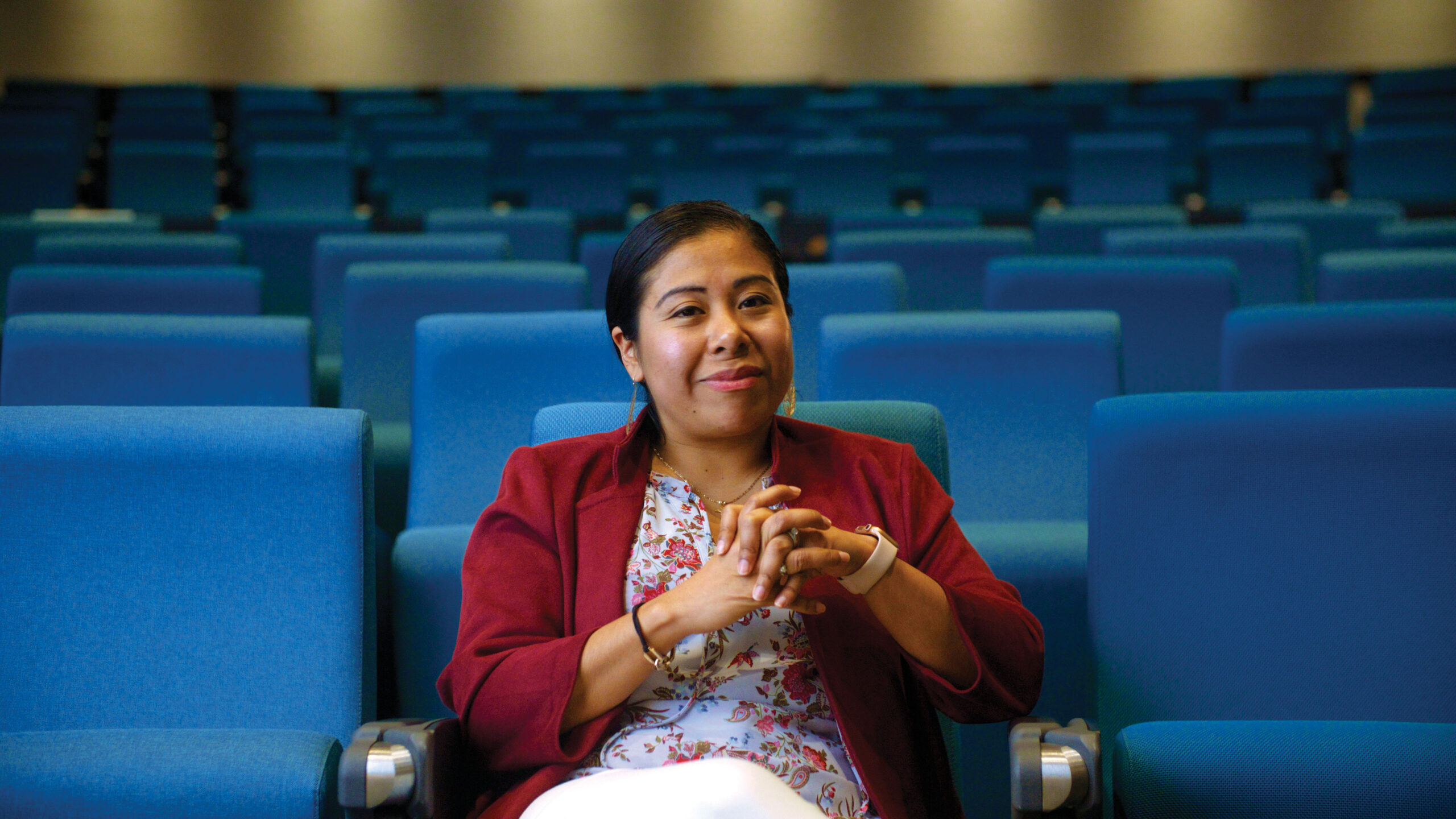By Darby Kendall
Health equity is a relatively uncomplicated idea on paper: the attainment of the highest level of health for all people, a state in which everyone has a fair and just opportunity to access health care. However, putting this idea into practice often proves much more challenging than simply defining it.
Medical sociologist Cirila Estela Vasquez Guzman, Ph.D., compares the concept to two ladders. One ladder has equal rungs and is easy to climb, representing those who have access to health resources. The other ladder has broken rungs or rungs missing entirely, symbolizing the situation for people who struggle with social, economic or environmental obstacles to health.
“It doesn’t matter how hard or how much someone wants to get to health and well-being; the structures are literally missing,” she explains.
To address some of those structural inequities, Vasquez Guzman has driven nearly 2,000 miles across Oregon and Washington, collecting the lived experiences of older age Latina women diagnosed with cervical cancer.
As a first-generation Latinx immigrant Indigenous scholar with a master’s in clinical research, Vasquez Guzman has always been interested in investigating inequities in health among Native American and Latinx communities. Now an assistant professor of family medicine at OHSU, she felt called to study the impacts of a disease where 90% of the deaths are preventable.
“$3.2 billion annually goes towards cervical cancer. Imagine what we can do with that money and spend it somewhere else if we’re actually able to prevent this disease,” Vasquez Guzman said at a presentation. “Not only do we have three stages of cervical cancer, but now we also have three stages of pre-cervical cancer. We have six opportunities to detect a woman’s ability before they get late diagnosis of cervical cancer, and it’s not happening among women, particularly Latinas. It’s a problem.”
A key part of preventing cervical cancer is the administering of the HPV vaccine, as it protects against most forms of the cancer. Lower vaccination rates paired with decreased screenings in underserved communities often cause cervical cancer rates to spike. This uniquely impacts older women, as over half of all the cervical cancer diagnoses occur over the age of 49.
“What’s happening among Latinas, and specifically among middle to older age Latinas — which I define as over the years of 45, when you’re outside of the reproductive age — because they’re less likely to go see their OBGYN or their doctor, they think, ‘I’m not having sex. So why should I get tested? Or why should I go in?’ And it’s still important for them to go in.”
In her study, Vasquez Guzman uses the Database of Individual Patient Experiences (DIPEx) methodology to interview the women. “I love it as a sociologist, because it’s all about meaningful impact.” She drives to their homes, sets up a camera, and lets them speak about their cancer experiences, uninterrupted. Sometimes they speak for 10 minutes, sometimes an hour. Afterwards, she asks them specific questions about their continuum of care, their diagnosis and treatment experiences.
“Then, I have them look directly into the camera, and I say, ‘What message do you want to say to providers? What message do you want to say to other Latina women? What message do you want to say to men, to say to family and friends, so that they can better support women going through this?’ That has been the most powerful piece of my interview.”
Having gathered impactful testimonies from 51 different Latinas, the information Vasquez Guzman found the most surprising in the interviews was how few of them were unable to describe cervical cancer, even after having the disease.
“We have a missed opportunity for them to leverage information and inform their daughters, inform their grandkids, making sure that they get HPV vaccination,” she emphasized. “We developed an infographic for them… When I do the interviews, I don’t just show up with my questions and get their stories. I give them information at the end of the interview, and I make sure that they’re equipped to be able to answer questions and to be advocates for themselves.”
Looking to the next steps of her study, Vasquez Guzman will begin interviewing providers and health care systems. Her hope is to develop a clinical intervention that leverages community-based research. “To me, it’s all about partnerships, because no one can do that alone. We need every single person in a system to be part of transformation.”
As a health professional who is passionate about transforming the face and practice of modern medicine, Vasquez Guzman feels empowered to work at OHSU, where the mission is to improve the health and well-being of Oregonians and beyond — the bedrock of health equity. The programs at OHSU’s Northwest Native American Center of Excellence, where Vasquez Guzman is a member, also bring her hope, with the creation of opportunities for the next generation of providers to address inequities in health.
“The goal is to create a culture and a structure of medicine that is truly preventative and is truly an open door for people to come in for health and well-being, not just for disease and sickness.”


